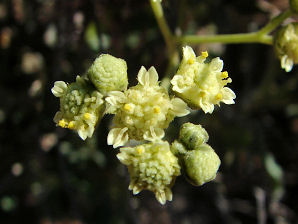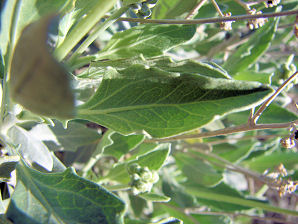Xeriscape Landscaping Plants For The Arizona Desert Environment.
Pictures, Photos, Information
Descriptions, Images, & Reviews.
Shrubs.
Guayule, Parthenium argentatum.
We Are Proud Of Our SafeSurf Rating!
Click On Any Of The Following Links By Amazon.Com
For Books, & Videos About Wildflowers Of Arizona & The Southwest USA. No Obligation!
 |
| Guayule, Parthenium argentatum. Plant. Phoenix Arizona Desert Botanical Garden. March 20, 2008. |
|---|
 |
| Guayule, Parthenium argentatum. Flowers. Phoenix Arizona Desert Botanical Garden. March 20, 2008. |
 |  |
| Guayule. Parthenium argentatum. | Guayule. Parthenium argentatum. |
|---|
Guayule.
We wish to thank Wikipedia, the free encyclopedia for some of the information on this page. We share images and information with Wikipedia. Guayule, pronounced, (why-Yoo-lee), was probably first used to make the hard rubber balls that were made by the Hohokam People in Arizona between about 700 to 1250 AD. They used these balls to play a game similiar to the ones played by the ancient people of Mexico and of Mesoamerica. Guayule or Parthenium argentatum is a native perennial shrub growing in the Chihuahuan Desert of north-central Mexico and southwestern Texas. It is economically important because it produces non-allergenic latex. It is a member of the composite family (Compositae), which produces rubber. Guayule grows in rocky, limestone desert habitats in full sun. It is bushy with dense branches, thick clusters of silverlike leaves that are covered with silvery hairs. It has small white flowers and it blooms continuously with the combination of high temperatures, long days, and some rain. It has a strong taproot, and a thick crown. Its flowers are hermaphrodite (have both male and female organs and they are pollinated by insects, wind and they are apomictic (reproduce by seeds formed without sexual fusion). The plant therefore is self-fertile. As a drought-tolerant evergreen, Guayule can be used on slopes for erosion control and in xeriscape landscapes where it displays its rounded, silvery form. Guayule was used during WWI & WWII by the USA & Mexico as a source of rubber. Guayule is considered source of rubber which can be obtained by the mechanical maceration of the roots and/or stems.
Quick Notes:
Height: Up to 3 feet tall and 3 feet wide.
Flowers: Hermaphrodite. White petals and yellowish on 6 inch stems.
Flowering Time: February to June. About anytime after rains.
Leaves: Green, Simple, alternate, drought-deciduous, narrow strip of blade along midrib and a couple of skinny lobes.
Found: The USDA claims it is native to the USA (TX). In Texas it is native to the Chihuahuan Desert. In Mexico it is native to the Chihuahuan Desert of Chihuahua, & Coahuila.
Hardiness:
Soil pH requirements:
Sun Exposure:
Elevation: Naturally found between 0 to 5,000 feet.
Habitat: Chihuahuan desert, sandy desert soils.
Miscellaneous: Flowering Photos Taken March 20, 2008. At Desert Botanical Garden Phoenix, Arizona. A good Xerioscape plant.
|
We Are Proud Of Our SafeSurf Rating!
Click On Any Of The Following Links By Amazon.Com
For Books, & Videos About Wildflowers Of Arizona & The Southwest USA. No Obligation!
| © 1966 - Present, Audrey, Eve, & George DeLange |
